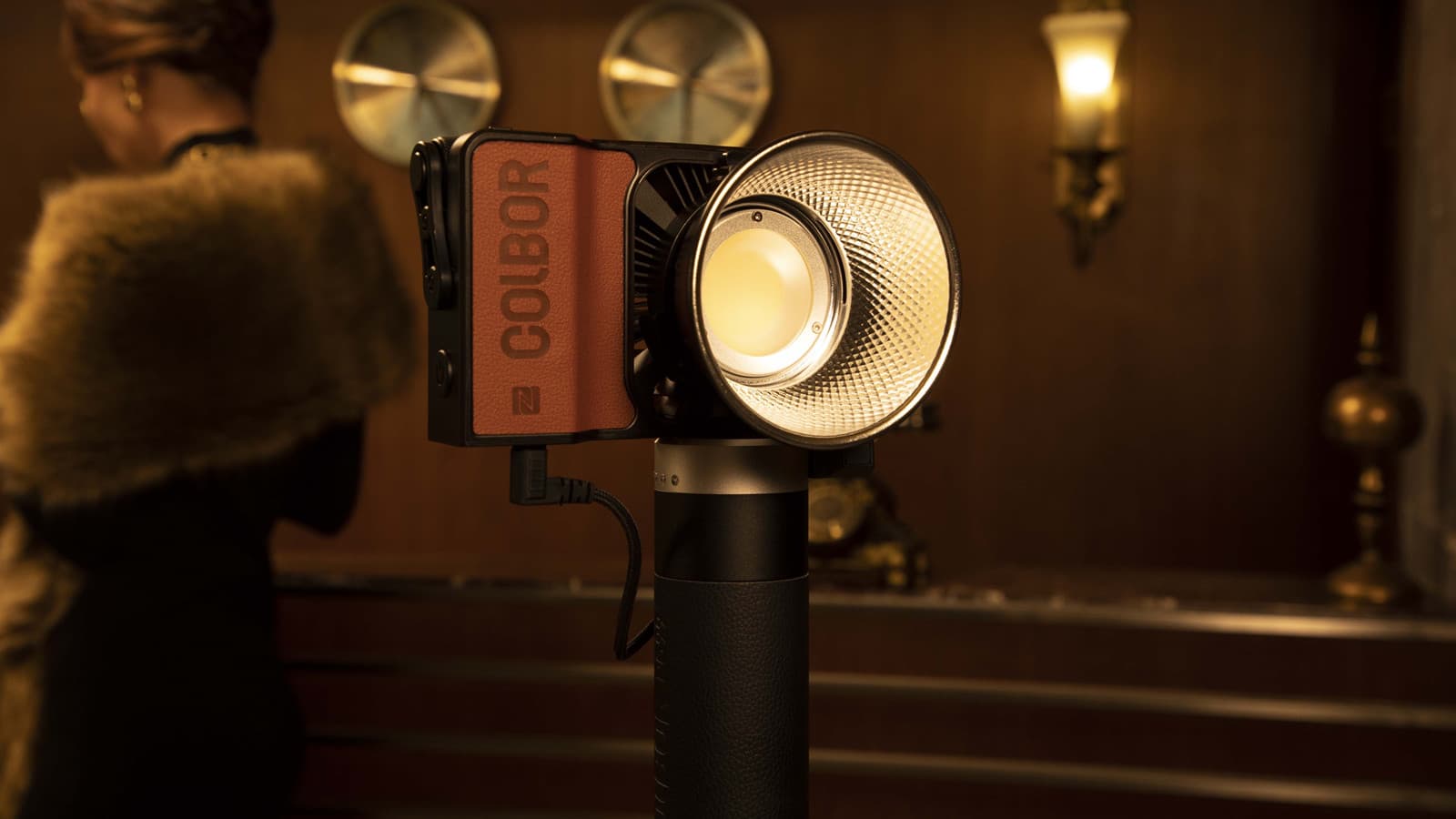During on-location filming, LED light for camcorder offers great versatility as a lighting solution. They assist camera operators in adjusting daylight exposure and provide essential illumination in low-light settings. But how to choose the best LED light for your content creation as there are numerous options on the market? In this article, we will focus on the factors to consider when you are making a purchase. Read on to set your requirements so you can narrow down the options and find the one that best suits your lighting needs.

Lighting types: Camcorder LED light varies in shape design, suitable for different applications
There are various types of LED camcorder lights to use. Here we divide them into four types according to their shapes.
Monolight-like LED light: If you want to mimic the shape of light of a strobe, opt for a monolight-style LED. One advantage of these LED studio lights is their compatibility with strobe modifiers, allowing you to easily shape the light. If you already own modifiers, you can probably use them with your LED to achieve the desired lighting effect, similar to what you would do with a strobe.
LED panel: Light panels are increasingly favored when a particular light shape is required directly from the source. Whether you require a sizable rectangular panel for illuminating a set or a circular "pancake" panel for producing natural catchlights during an interview, there's likely an LED available on the market with a suitable size and shape. Some panels even offer foldable or bendable flexibility to achieve specific effects or accommodate tight spaces. However, one downside of light panels is that modifiers are less interchangeable between models than monolight-style LEDs, as they are custom-tailored to each light's size and shape.
LED ring light: This LED light for camcorder is perhaps the most popular these days. Long utilized by makeup artists and vloggers, it is now commonly used as video conferencing lights due to their ability to produce flattering illumination when positioned close to a subject's face.
Fresnel LED: To precisely control your light's beam angle, opt for a Fresnel LED. Fresnel lenses, a staple in the film industry predating LEDs, are utilized to precisely shape light spread. These lenses can also be integrated with compatible monolight-style LEDs to narrow the beam angle and enhance output.
Beam angle: It is determined by where you have camcorder recording
The initial consideration is determining the desired width of your light beam. Generally, LEDs (and other continuous lights) can be categorized into two primary designs: spot or flood. As the names suggest, spotlights offer a concentrated light source, whereas floodlights illuminate a larger area. For portrait, still life, or subject isolation purposes, a spotlight is preferable, while a floodlight is more suitable for larger subjects or room illumination.
The crucial specification to assess is the beam angle. A higher beam angle results in a wider light spread. However, it's important to note that with increased beam angle, there is a more noticeable falloff towards the light's edges. This will potentially leads to uneven lighting if not managed properly.
Wattage output: It should be bright enough to illuminate subjects and scenes properly
Wattage output indicates the overall power of your LED light for camcorder. Lights of different strengths serve various purposes, so to streamline your options and find the most suitable one, consider the level of intensity required. Higher wattage also implies greater power consumption for your light.
If you're unsure about the necessary wattage, reflecting on the environments where you'll use the light can provide a fairly accurate estimation.
- For outdoor daytime use, such as eliminating subtle shadows and illuminating subjects, lower power may suffice compared to studio settings with intense existing lighting conditions.
- For shooting in low-light or dusk outdoors, opting for higher power and adjustable color temperature is advisable.
- Lower wattage can be advantageous for on-location shoots due to potentially longer battery life, although some powerful lights also boast impressive battery performance.
- For smartphone self-photography, lower wattage is sufficient, necessitating smaller, highly portable devices.

Power source and battery life: It should support constant creation during your camcorder recording sessions
LED on-camera lights typically operate using batteries, battery packs, or a mains input.
If you anticipate frequent on-location shoots, prioritize on-camera LEDs with extended battery longevity. It's advisable to select a light with a battery life of around 2.5 to 3 hours to ensure uninterrupted project completion or planning.
Additionally, remember to consider the charge time, especially for lights compatible with or featuring battery packs, which can sometimes be overshadowed by impressive battery life.
Color options: Choose among LED lights for camcorder of daylight, bicolor, and RGB
LED camcorder lights come in various types, including daylight balanced, tungsten balanced, bicolor, and full RGBWW. Bicolor lights provide versatility in adjusting to different environmental lighting conditions, transitioning between daylight and tungsten. However, it's essential to recognize that due to the multiple color temperatures of individual LEDs, the overall output tends to be lower compared to tungsten or daylight-balanced LEDs.
For creative purposes, RGBWW LEDs offer the broadest range of colors and effects without requiring gels. Similar to bicolor lights, the output of portable RGB video light is typically lower by design, making them less powerful compared to equivalent daylight- or tungsten-balanced models.
CRI: Opt for camcorder LED video light with high CRI for accurate color reproduction
Verify the CRI (Color Rendering Index) and TLCI (Television Lighting Consistency Index) of the light to assess its accuracy. CRI evaluates how well the light replicates colors compared to natural light, with an optimal range typically falling between 95 and 98 for optimal results. Lights with a CRI below 85 may cause discomfort during footage review. TLCI gauges the accuracy of a light source for camera sensors, with a recommended range of 85 to 100 for easier post-production work.
